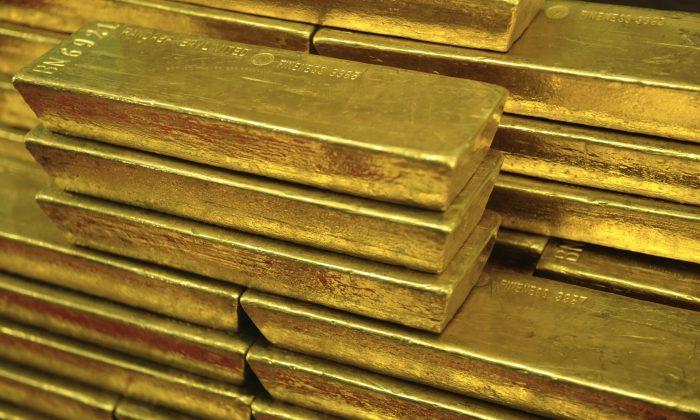China’s private sector is amassing gold and has outpaced India, pushing that country to second place in 2013, according to a mid-April report by the World Gold Council (WGC).
China’s private sector gold purchases in the global gold market accounted for 26 percent of the world’s total gold purchases in 2013.
In the fine print of the WGC report, China’s private sector gold purchases were exceptionally high during 2013 because of a decrease in gold prices. Therefore, many gold purchasers might not have the wherewithal to buy gold in 2014.
“The sudden price drop in 2013 meant some Chinese consumers brought forward jewelry and bar purchases, which may limit growth in demand in 2014. Expansion by the trade is also expected to slow, particularly in terms of additional manufacturing capacity,” according to the WGC report.
Official Holdings Another Story
On the other hand, China’s official gold holdings account only for 1.2 percent of the country’s reserves, according to another WGC April release. The People’s Bank of China (PBOC), the country’s central bank, holds that gold.
Comparing China’s gold holdings to its reserves is misleading, however, even though most media and researchers make that comparison. Actually, when it comes to total gold holdings, China is in sixth place among the world’s central banks, with 1,054.1 metric tons. This is significantly less than the United States, which holds the most gold in the world with 8,133.5 metric tons.
The above numbers appear to be false if one reads Jeffrey Nichols’ blog. It states that according to rumors, China’s central bank had increased its gold holdings to 2,710 tons by the end of 2013.
Gold experts state that most all numbers used by the international community are assumptions, as the last time China’s central bank disclosed its official gold holdings was in 2009. The WGC and the International Monetary Fund (IMF) still report the 2009 numbers in their lists.
China’s Rumors and Tactics
In January, consulting firm CPM Group stated that the rumors about the PBOC having increased its holdings were fabricated. The article stated that the PBOC has announced publicly that it is complying with IMF reporting standards on releasing monetary reserve figures.
However, CPM Group qualified its statements by stating that it is more likely that China Investment Corporation (CIC), the country’s sovereign wealth fund, has bought gold for its investment portfolio. Given their different mandate, the two are not comparable.
According to CPM Group, the Chinese regime might have directed the PBOC to purchase some gold in the beginning of 2009.
This could have happened “for the express purpose of sending a message to the U.S. Treasury and European Central Bank that it was not pleased with the way that the Treasury had bailed out a handful of U.S. bankers at the expense of everyone else, including the PBOC,” according to CPM Group’s January Market Alert.
China could use another tactic to hoard gold by encouraging “domestic absorption of gold by the private sector. The reasoning would be … these ’reserves’ held by the population could always be called upon by the state,” according to the WGC report.
Room for Error
There is lots of speculation about China’s gold holdings, private or official. CPM Group holds that China’s 2013 gold purchases most likely were not driven by the PBOC to increase its reserves but could have been on behalf of the CIC.
CPM Group also stated that the statistical information being quoted by a number of market gurus and gold investment firms was not grounded on well-researched data, but was “based on a hotchpotch of inferences from a variety of data sources, ranging from trade data between Hong Kong and China (which does not accurately capture net gold inflows), Chinese mine supply data, and Chinese fabrication demand data.”
One problem is that the data collection system used by China and Hong Kong’s customs could potentially inflate data. Specifically, the gold may cross borders between the two countries several times, inflating or deflating some of the data.
For example, at least one source used gold deliveries to the Shanghai Gold Exchange Physical Gold Delivery in its supply calculations, not understanding that these gold deliveries are shipped back and forth between the two countries.
There are many more scenarios that could distort information going into and coming out of China. Most “estimates are most likely flawed. The gold market is a free market, populated by many people with various objectives and no regulation on what they can say or write about gold,” stated the CPM Group Market Alert.
According to China experts, no matter what numbers are reported by international publications, they most likely do not represent true numbers. China is not known for reporting true numbers, be it gold imports or any other statistical data. Thus, every report should be considered with that in mind.





Friends Read Free